
Yes, milkweed (Asclepias) does grow wild alongside roadways and in vacant lots but make no mistake, it is not a weed. In fact, it is a coveted garden plant favored by not only flower enthusiasts but also butterfly aficionados.
The plant produces an abundance of fragrant flower clusters that act as a magnet for garden pollinators.
There are four common types of milkweed grown in landscapes Common Milkweed, Whorled Milkweed, Swamp Milkweeds, and Butterfly Weed. They can thrive in a wide range of habitats with little or no care.
The History of the Milkweed Flower
The milkweed has a long and illustrious history as a cottage garden favorite. It is the crowning glory in any butterfly garden where it is the needed food source for the monarch butterfly. The plant’s sweet nectar also draws hummingbirds and bees.
The milkweed has toxic properties which makes it unattractive for a number of foragers, such as deer, so it will grow and bloom undisturbed by pests.
Historically, many grew milkweed in the garden for its medicinal value. It has been favored by naturopathic physicians for centuries as a holistic remedy for a bevy of disorders.
It has been used for the following:
- Diarrhea
- Snow blindness treatment
- Sore throat relief
- Rash treatment
- Ease swelling
- Saliva production
The silky material within its seed pods is often used as life vest filler.
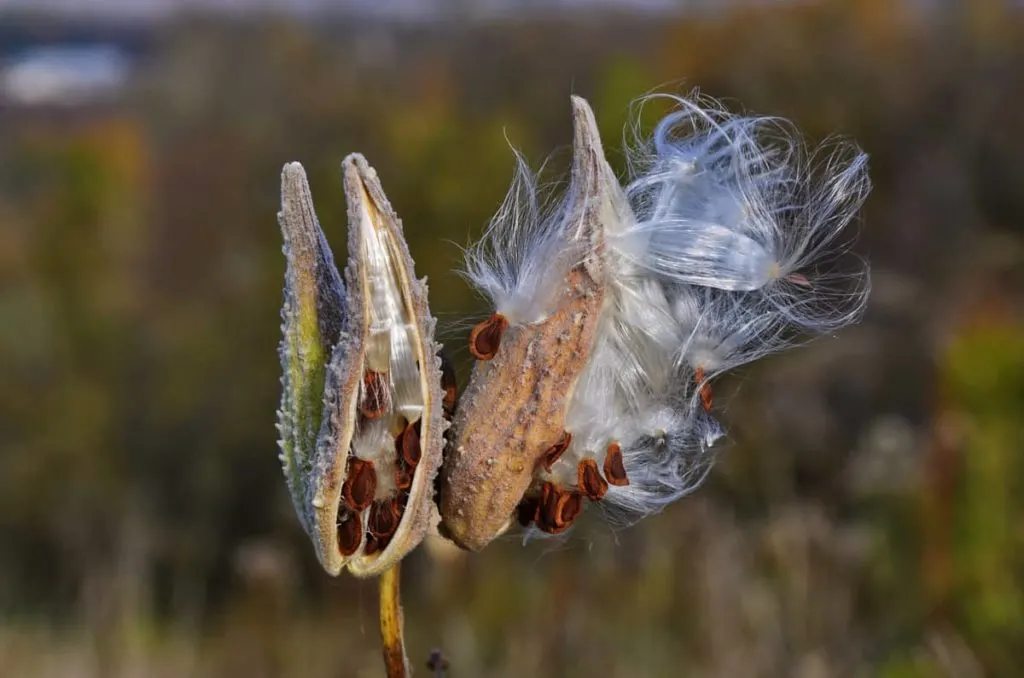
Milkweed and Monarch Butterflies
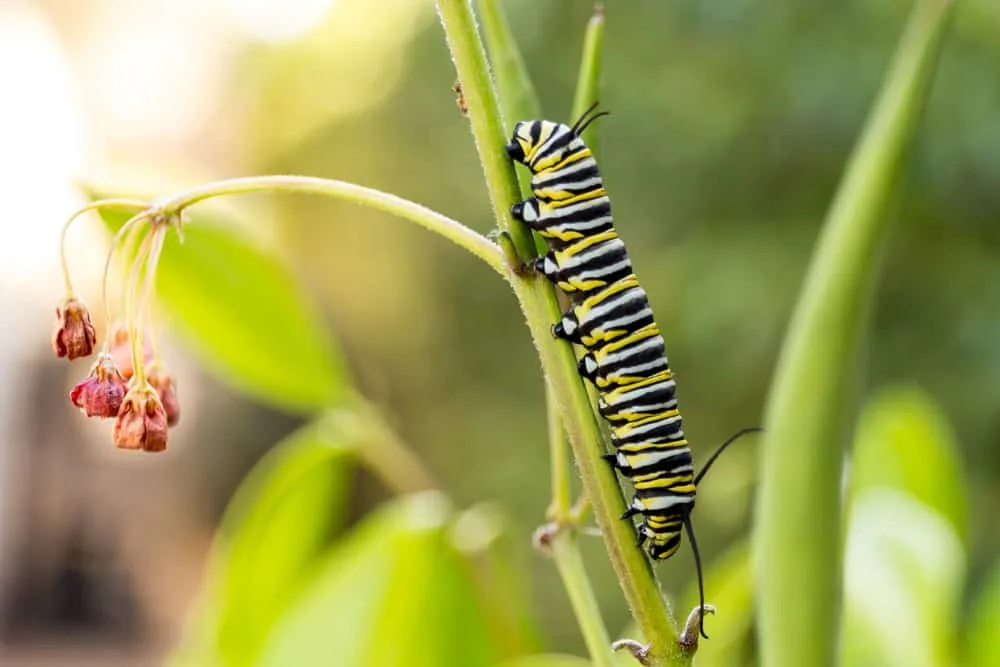
Milkweed is a must-have necessity for Monarch butterflies. The plant is the sole source of food for the Monarch caterpillars and affords them protection from predators.
Without access to Milkweed, the Monarch butterfly would quickly become extinct.
The Appearance of Milkweed
Many people complain that milkweed gets too tall and lanky, but you can plant it in the back of the garden and then use shorter plants to position around the base.
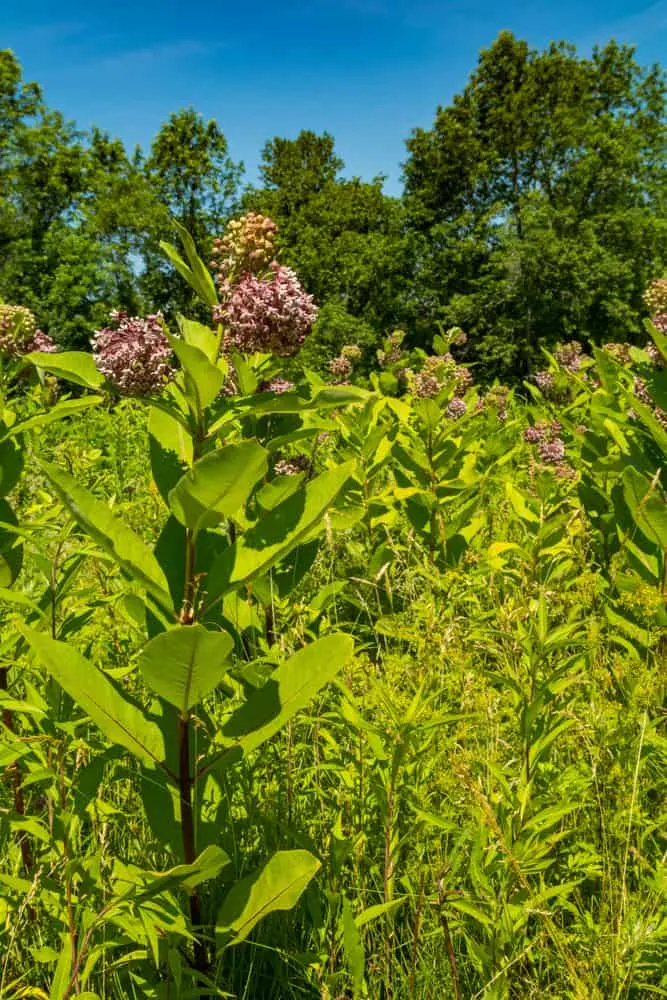
Depending on the variety and planting site, you can expect the milkweed to reach a height of 2 to 6 feet. The main stalk of the plant is exceptionally thick with large green leaves.
As the plant matures, its stem starts to hollow and exude a milky substance. The flower clusters range from pinkish-purple to brilliant orange and adorn the plant from June to August.
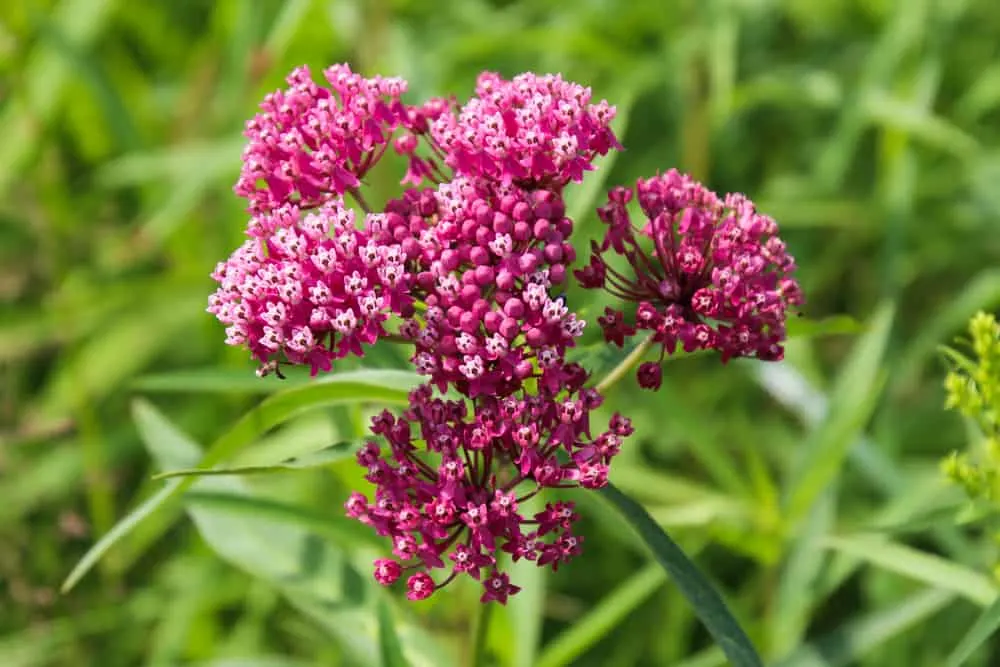
Planting Milkweed
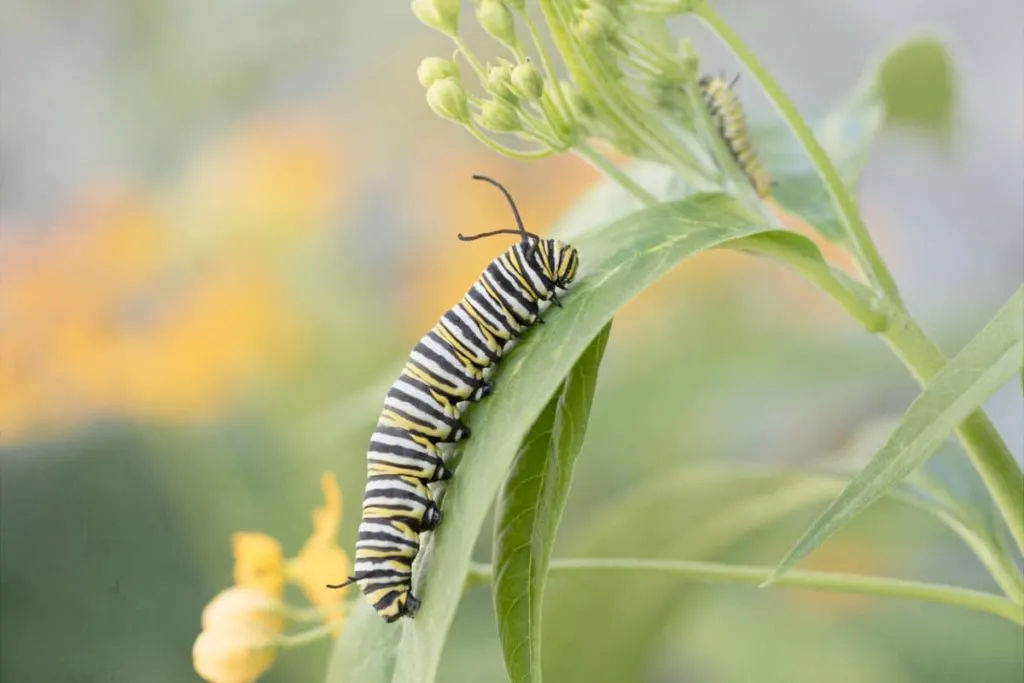
Choose a planting location where the milkweed plant will receive at least six to eight hours of sunlight per day.
Milkweed self-seeds rapidly so many gardeners look for a planting location that affords some wind protection to prevent the wide seed dispersal that occurs when the plant’s seed pods mature and pop open.
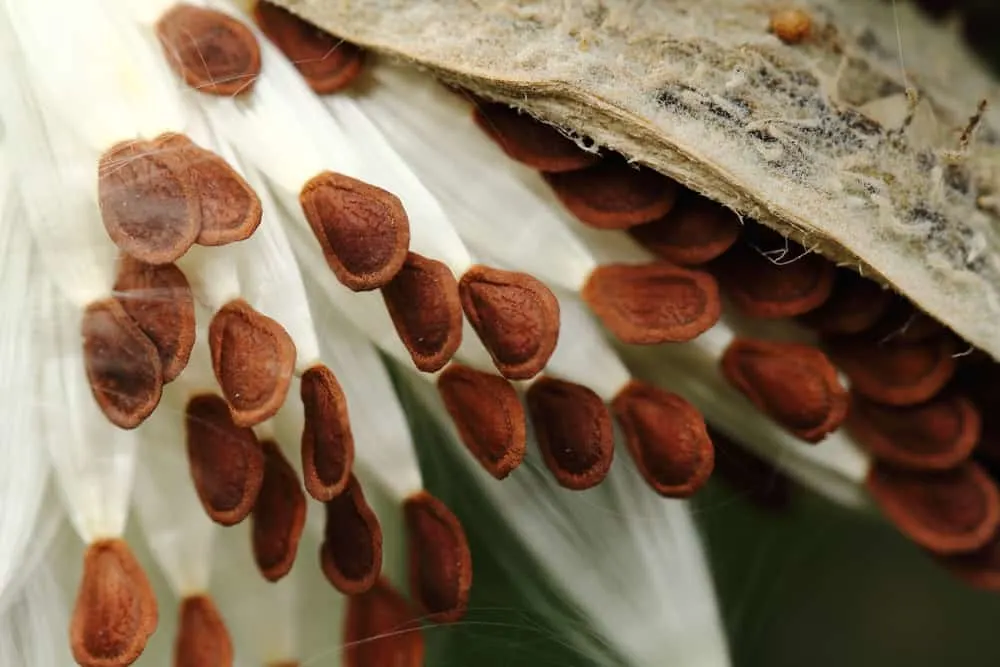
Pick a planting location that makes you happy because milkweed’s long taproot makes it virtually impossible to successfully transplant once it is established.
Planting requirements based on milkweed type:
- Common milkweed grows best in average soil conditions.
- Tropical milkweed favors a hot, humid location (in colder climates it only grows as an annual)
- Swamp milkweed grows well in moist soil conditions. Plant this variety near lakes or ponds for optimum growth.
- Butterfly milkweed (also called whorled milkweed): Flourishes in dry conditions.
Spacing Milkweed
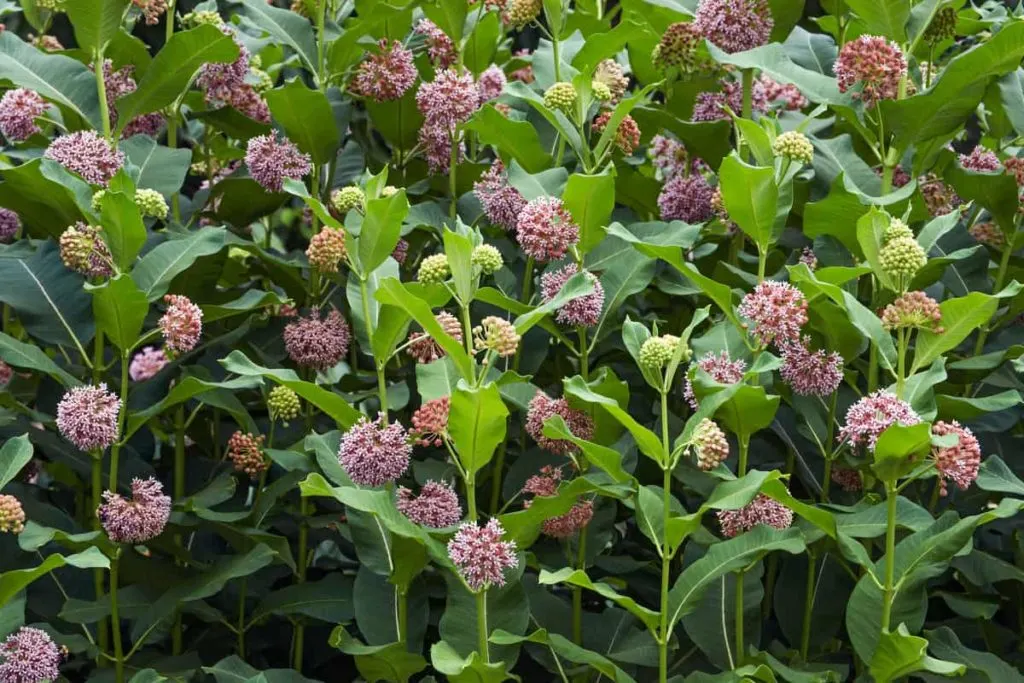
When fully established, milkweed has a deep root system. It does not transplant well so be sure to pick a permanent spot in the garden.
Space the plants at least 18 inches apart. However, Swamp Milkweed requires a larger growth areas of at least 36 inches.
You can space them close together and then thin as the plants mature or you can start out spacing them from 30 to 36 inches apart to provide ample growth space.
When to Plant Milkweed
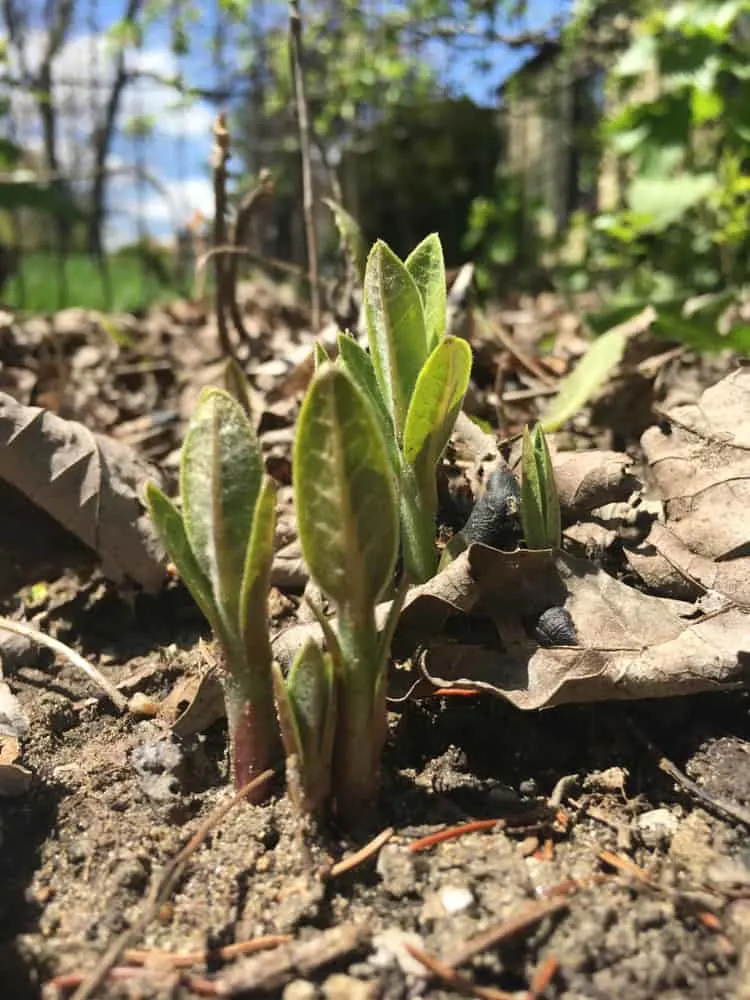
Plant milkweed plants in the spring or fall months. You can sow the seeds directly in the garden in the autumn or start them indoors in the spring for early transplant into the flowerbed.
Spring Planting
If you plant milkweed in the spring, then it will appear dormant with no green leaves, but this is perfectly normal. The plant will focus on growing a diverse root system. Once it has spread its roots out and the soil warms then the milkweed will spring to life and start to develop foliage and flowers. Avoid over watering when the plant is in the dormant stage.
Fall Planting
Plant milkweed in the fall before winter arrives. The milkweed will remain dormant and then wake up in the spring when the warm weather returns.
Starting Milkweed from Seed
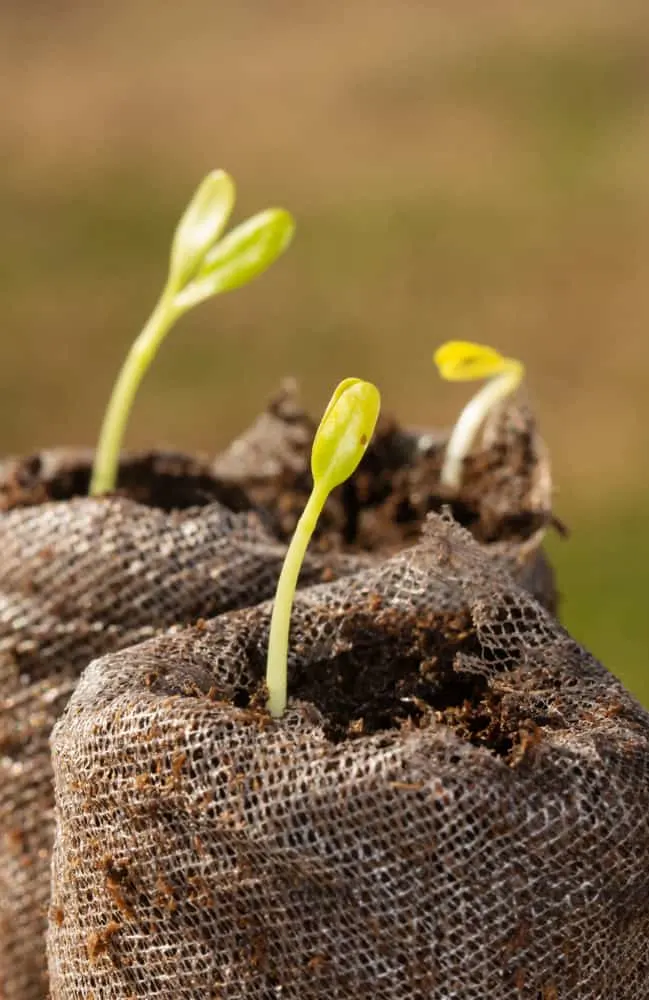
Yes, you can start milkweed from seed. You can spread the seeds in the garden in the fall, so they receive ample cold stratification.
If you start milkweed seeds indoors in the spring, then you’ll need to place the seeds in the refrigerator to mimic Mother’ Nature’s cold winter. The seeds will need to remain in the refrigerator for at least three to six weeks before planting.
- Use 2” to 4” peat pots to start milkweed seeds.
- Fill the peat pots with a general purpose planting soil.
- Place one or two seeds per pot.
- Cover with ¼ inch potting soil and firm across the seed’s surface.
- Keep the soil moist but not overly wet.
- Position the seed-filled peat pots in a window with full sun (you can also use grow lights)
- Gently mist the soil to keep it moist but not overly water-logged. You can also use a potting pan that waters from a tray. The soil should feel moist but not overly wet.
- Germination will occur in about 10 to 15 days after planting.
Planting Location
Plant the milkweed in an area of the landscape with full sunlight for best success. Milkweed thrives in sunny locations with ample room to spread.
Transplanting Outdoors
One of the most difficult aspects of cultivating milkweed is transplanting the seedlings outdoors. The roots of the milkweed are exceptionally sensitive. If you try to remove the small plants from their peat pots, then you can easily damage the roots. However, if you plant them directly in the soil in their peat pots then you will have the greatest success. Try not to disrupt the root system so the plant adapts.
Transplanted milkweed can go through some shock and might lose leaves. However, just remember that the plant is putting a great deal of energy into developing its root system.
Milkweed offers a non-stop floral display throughout the summer months which is extremely eye-catching. The plant thrives on minimal care and will attract butterflies, hummingbirds, and other pollinators to your garden.
It is the perfect summertime landscape addition for color and visual interest.
